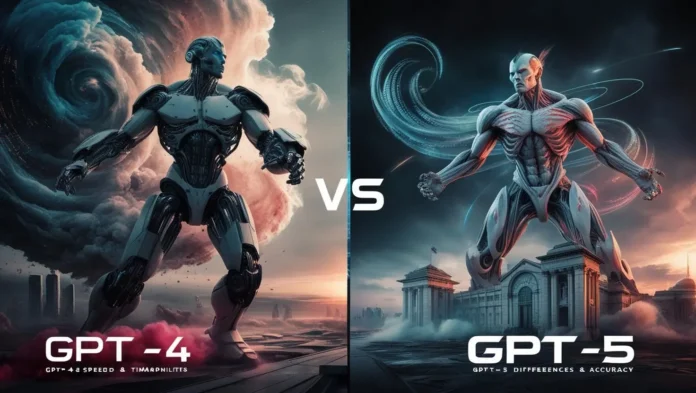Curious about the GPT-4 vs GPT-5 key differences? The transition from GPT-4 to GPT-5 marks a major leap in artificial intelligence. In this article, we’ll explore the GPT-4 vs GPT-5 key differences across model size, accuracy, prompt understanding, multimodal capabilities, and real-world applications. Whether you’re a developer, educator, content creator, or simply AI-curious, this breakdown will help you understand what has changed—and why GPT-5 is more than just an upgrade.
1. GPT-4 vs GPT-5 Key Differences in Model Size and Training Data
GPT-4 was trained on around 1 trillion parameters, making it extremely capable. GPT-5, while OpenAI hasn’t confirmed the exact number, is estimated to run on 3–5 trillion parameters. This leads to:
- Significantly better context retention
- Reduced hallucinations
- Greater accuracy in multi-step reasoning
GPT-5 also benefits from a much more recent training dataset, including information up to early 2025. This makes it smarter, more current, and more relevant.
More on large language model evolution
2. Multimodal Capabilities: GPT-4 vs GPT-5
GPT-4 introduced the ability to interpret text and images. GPT-5 expands this dramatically:
- Processes text, images, and audio simultaneously
- Supports voice prompts and voice output
- Understands and generates descriptions for videos
In short, GPT-5 is designed to think like a human across multiple sensory inputs.
3. Context Understanding and Prompt Accuracy
While GPT-4 could manage fairly complex prompts, it sometimes lost track of long conversations. GPT-5 is built to remember and adapt:
- Handles over 200,000 tokens in a single session
- Maintains context over long interactions
- Excels in chain-of-thought and multi-step reasoning
This means more consistent and accurate results in multi-turn conversations or complex tasks.
4. GPT-4 vs GPT-5 Accuracy and Output Quality
One of GPT-5’s biggest improvements is its reliability:
- Significantly fewer hallucinated facts
- Better citation capabilities (especially in Pro versions)
- More willingness to admit when it doesn’t know something
It also excels at:
- Writing cleaner, more coherent code
- Offering deeper insights in educational or technical writing
- Producing longer, more structured content
5. API and Developer-Focused Features
GPT-5 is built for integration. OpenAI has rolled out:
- More robust memory tools (context carry-over)
- Advanced function calling (v2)
- Adjustable personality presets
- Improved rate limits and pricing tiers for scaling applications
This makes GPT-5 an ideal engine for AI-powered apps, chatbots, and automation.
6. Ethical Considerations and AI Alignment
Safety has always been a concern in large language models. GPT-5 takes a more proactive approach:
- Stricter filtering for harmful content
- Better alignment with human values
- Adaptive moderation based on intent and context
Its ethical guardrails are stronger, yet it remains flexible for professional use.
7. Real-World Use Case Differences
Thanks to its performance and flexibility, GPT-5 is reshaping industries:
- Real-time customer support powered by voice and text
- Advanced educational tutors capable of guiding students
- Content creation pipelines for marketing and journalism
- Low-code and no-code app builders
It’s not just smarter—it’s more usable.
Final Thoughts on GPT-4 vs GPT-5 Key Differences
GPT-4 is still a solid model. It’s fast, reliable, and proven. But if you:
- Work with large content volumes
- Need better accuracy and fewer hallucinations
- Want to build AI-integrated tools and platforms
Then GPT-5 is the clear winner. It’s not just an evolution—it’s a transformation.
Looking to learn more? Check out our AI Education, AI Tool Reviews, Prompt Engineering Guides, or compare GPT models in our AI Blog.

